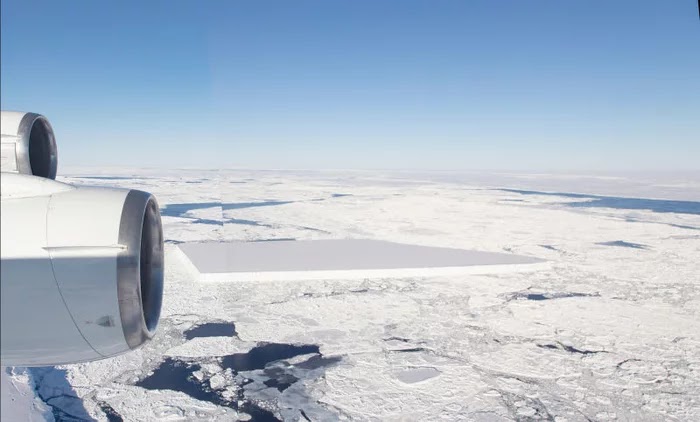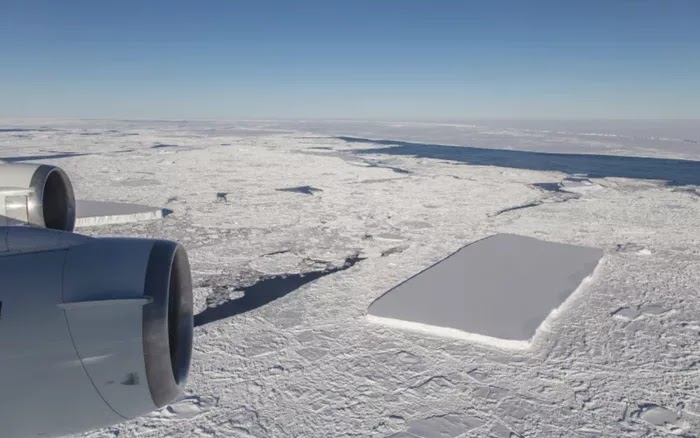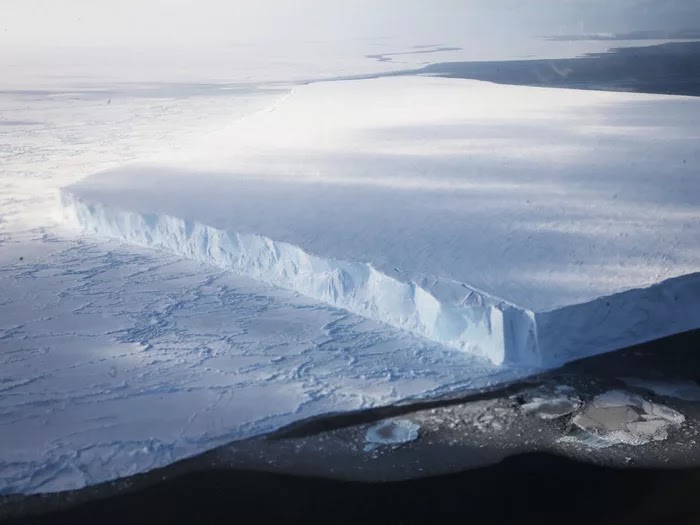
NASA photographed this iceberg in Antarctica as part of Operation IceBridge.
Sitting amid a chaotic jumble of floating ice, it looks rectangular.
Tabular icebergs, by contrast, look more like this rectangular 'berg. They are large slabs of ice with nearly vertical sides and a flat top, and they usually form by calving off ice shelves.
According to University of Maryland Earth scientist Kelly Brunt, you could think of it a little bit like a fingernail growing too long and cracking off at the end - results in perfect, straight, geometric lines.
These tabular icebergs can be enormous hundreds or even thousands of square kilometers, like the 11,000 square kilometers (4,200 square miles) B-15, the biggest iceberg ever recorded.



NASA/Jeremy Harbeck

















COMMENTS